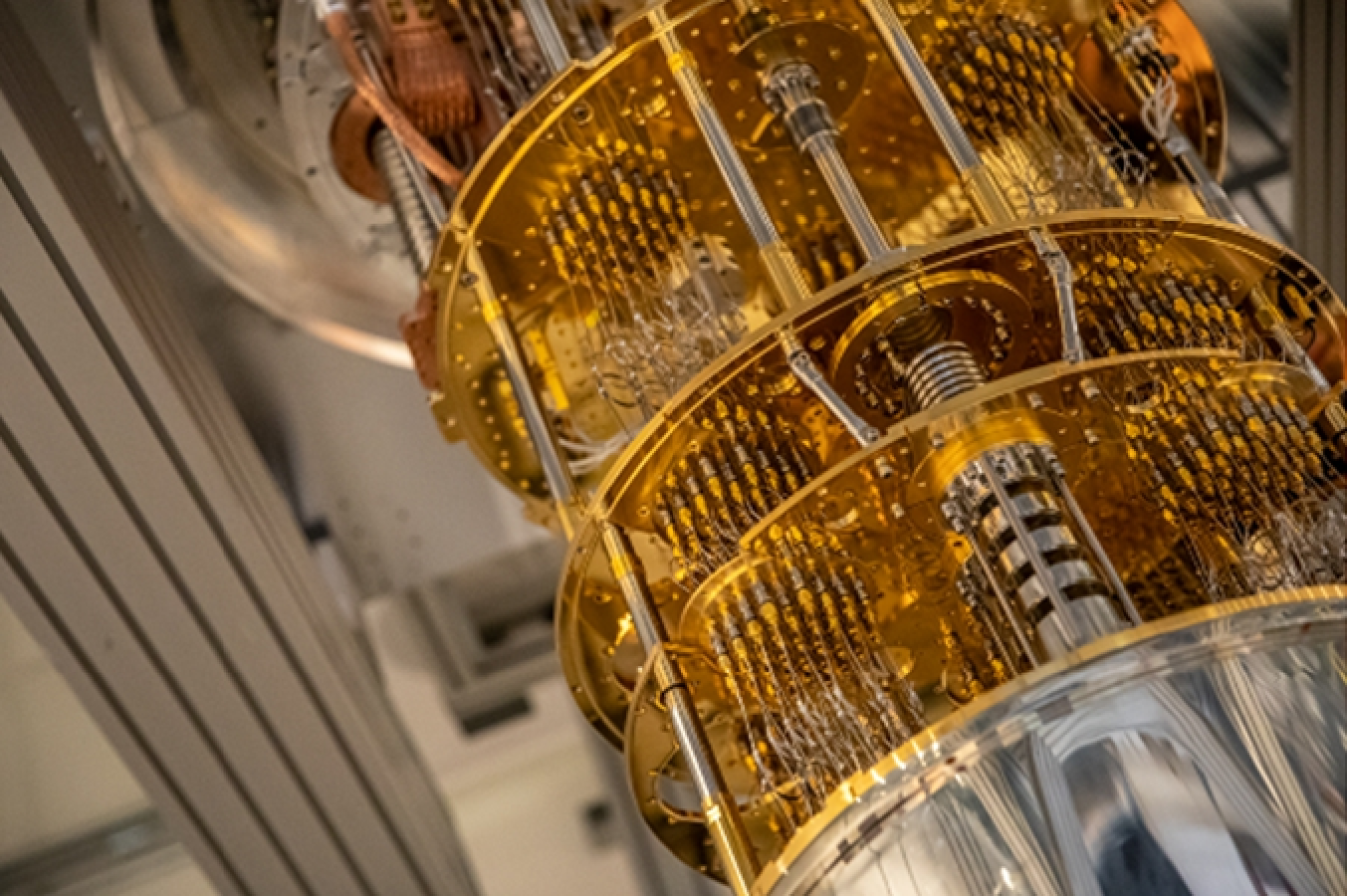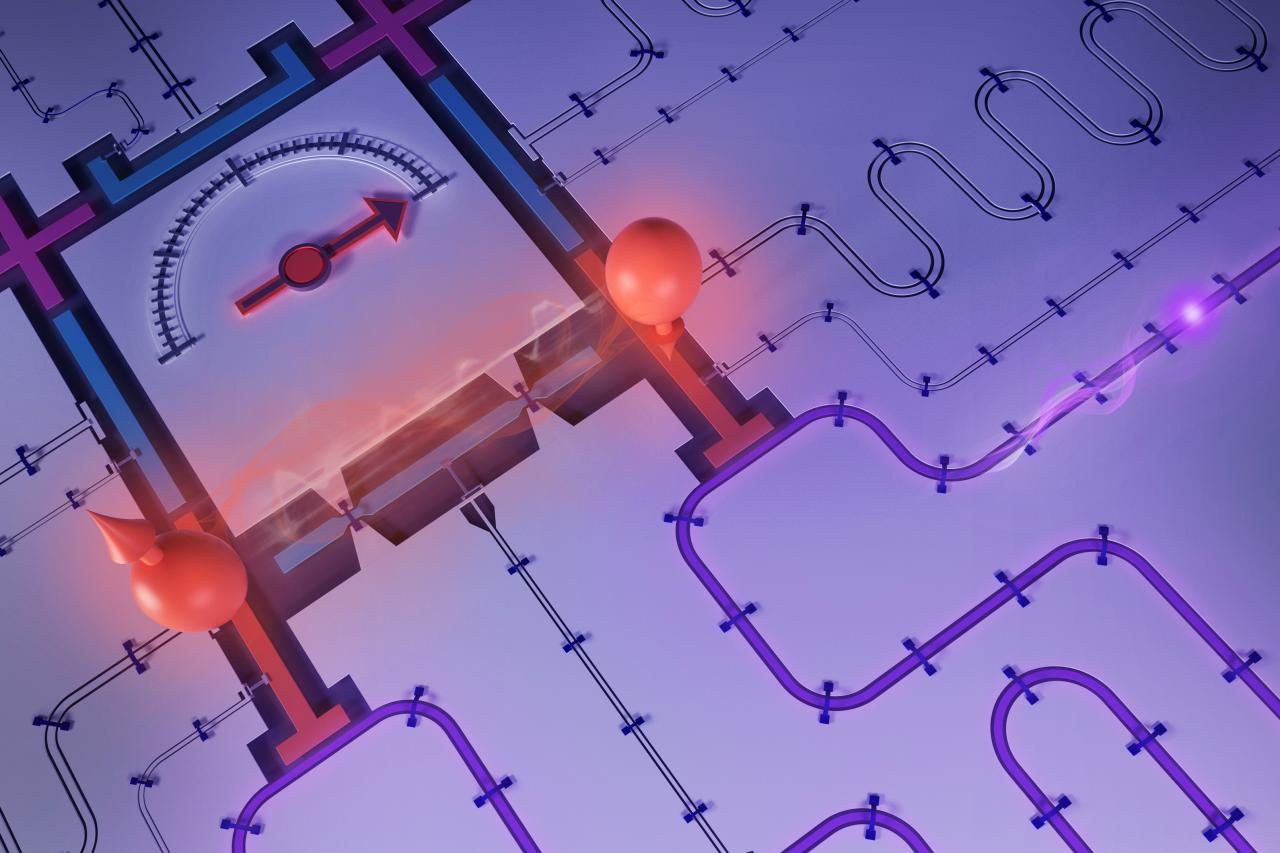The Quantum Leap

For decades, classical computers have followed the principles of binary bits, representing information as either a 0 or a 1. While incredibly effective for a vast range of tasks, this classical approach encounters fundamental limitations when confronted with problems of immense complexity – those involving intricate simulations, cryptographic challenges, or the optimization of highly complex systems. This is where quantum computing steps in, offering a new computational model based on the mind-bending principles of quantum mechanics.
Quantum servers, at their core, utilize quantum bits (qubits). Unlike classical bits, qubits can exist in a superposition of states (both 0 and 1 simultaneously) and can be entangled with each other, allowing for exponential increases in processing power as more qubits are added. This unique capability enables quantum computers to explore multiple possibilities concurrently, vastly accelerating computations for specific types of problems. The development of robust and scalable quantum servers is paramount to transitioning quantum theory from the laboratory to practical, real-world applications, unlocking solutions to humanity’s most pressing challenges.
Core Technologies for the Quantum Foundation
The creation of a functional quantum server is an engineering marvel, involving cutting-edge technologies to maintain the delicate quantum states of qubits.
A. Qubit Architectures
The choice of qubit technology significantly impacts a quantum server’s characteristics, including scalability, error rates, and coherence times. Each approach presents unique advantages and engineering challenges.
- Superconducting Qubits:
- Mechanism: These qubits are made from superconducting materials that, when cooled to near absolute zero (millikelvin temperatures), exhibit zero electrical resistance. Qubit states are encoded in the quantum properties of electrical circuits (e.g., charge or phase of superconducting currents).
- Advantages: Known for relatively long coherence times (how long a qubit maintains its quantum state) and a pathway to scalability, making them a leading contender for current quantum computers (e.g., IBM Quantum Experience, Google’s Sycamore processor). They are well-suited for integration onto a chip.
- Challenges: Requires extreme cryogenic cooling, making the infrastructure complex and energy-intensive. Sensitivity to electromagnetic noise is also a significant hurdle.
- Trapped Ions:
- Mechanism: Individual atoms (ions) are suspended in a vacuum chamber using electromagnetic fields and cooled with lasers. Qubit states are encoded in the electron energy levels of these ions.
- Advantages: Known for exceptionally long coherence times and very high fidelity (accuracy) in qubit operations. The individual addressing of ions allows for strong connectivity between qubits, simplifying certain quantum algorithms. Companies like IonQ are pioneers in this space.
- Challenges: More complex to scale up the number of qubits due to the difficulty of manipulating many individual ions simultaneously and maintaining their precise positions.
- Topological Qubits:
- Mechanism: A more theoretical approach (though being actively researched by Microsoft), topological qubits encode information in exotic quantum states of matter that are intrinsically protected from local disturbances.
- Advantages: Expected to have extremely low error rates and exceptional stability due to their inherent robustness against environmental noise, which could simplify quantum error correction significantly.
- Challenges: Still largely in the research phase, with significant material science and engineering hurdles to overcome before practical implementation.
- Silicon-Based Qubits (Spin Qubits):
- Mechanism: Similar to classical silicon chips, but qubits are encoded in the spin of individual electrons or phosphorus atoms embedded in a silicon lattice.
- Advantages: Benefits from decades of silicon manufacturing expertise, offering potential for high scalability and integration with classical electronics. Promising for long coherence times.
- Challenges: Precision placement and control of individual electrons/atoms are extremely difficult, and they also require cryogenic cooling, though not as cold as superconducting qubits.
- Photonic Qubits:
- Mechanism: Qubits are encoded in the properties of individual photons (particles of light), such as their polarization.
- Advantages: Operates at room temperature, making cooling simpler. Ideal for quantum communication and networking due to light’s ability to travel long distances. Companies like PsiQuantum are focusing on this.
- Challenges: Interaction between photons is weak, making it difficult to entangle them for computation. Requires highly efficient single-photon sources and detectors.
B. Cryogenic Systems
Most leading qubit technologies require temperatures colder than outer space to maintain their delicate quantum states, necessitating sophisticated cooling infrastructure.
- Dilution Refrigerators: These highly specialized refrigerators use mixtures of helium isotopes (Helium-3 and Helium-4) to achieve temperatures just a few thousandths of a degree above absolute zero (millikelvin range). They are the core of cryogenic cooling for superconducting and some silicon-based qubits.
- Cryostats and Vacuum Chambers: Qubits are housed within multi-layered vacuum chambers and cryostats to isolate them from external heat and electromagnetic interference, creating the ultra-cold, stable environment required for quantum operations.
- Pulse Tube Refrigerators: Used as a pre-cooling stage for dilution refrigerators, offering efficient cooling down to a few Kelvin, reducing the load on the final, colder stages.
C. Control Electronics and Software
Even though quantum, these servers rely heavily on classical electronics and sophisticated software for control, readout, and error correction.
- Low-Noise Microwave Electronics: For superconducting qubits, precise microwave pulses are used to manipulate qubit states. This requires extremely low-noise electronics operating at cryogenic temperatures, often integrated directly with the quantum chip.
- High-Speed Signal Processors: Rapidly read out the quantum state of qubits and perform classical computations necessary for feedback control and quantum error correction.
- Quantum Control Software (QCS): This specialized software layer translates high-level quantum algorithms into the precise sequences of microwave pulses or laser commands required to manipulate qubits. It manages calibration, sequencing, and basic error handling.
- Quantum Error Correction (QEC) Systems: Qubits are inherently noisy and prone to errors. QEC is a critical field that uses redundant qubits and sophisticated algorithms to detect and correct errors without directly measuring the quantum state, making the overall quantum computation more robust. This requires a significant overhead of physical qubits for each logical qubit.
The Impact for Transforming Industries and Science
While still in its early stages, the potential impact of quantum server innovations is vast and far-reaching, promising to revolutionize numerous sectors.
A. Drug Discovery and Materials Science:
- Molecular Simulation: Quantum computers can precisely simulate the behavior of molecules and chemical reactions at the quantum level, something intractable for classical computers. This will accelerate drug discovery, allowing researchers to design new molecules with desired properties, understand protein folding, and develop highly effective pharmaceuticals.
- Novel Material Design: Designing new materials with unprecedented properties (e.g., superconductors at room temperature, highly efficient catalysts, stronger and lighter alloys) becomes possible by simulating their quantum mechanical interactions, opening doors to revolutionary industrial applications.
B. Financial Modeling and Optimization:
- Portfolio Optimization: Quantum algorithms can analyze vast numbers of variables and potential scenarios simultaneously, enabling more sophisticated and optimal investment portfolio management, risk assessment, and fraud detection.
- Option Pricing: Accurately pricing complex financial derivatives, especially in volatile markets, can be significantly enhanced by quantum computers, leading to more robust financial models.
- Algorithmic Trading: While still theoretical for high-frequency trading due to latency, quantum algorithms could inform long-term trading strategies by identifying complex patterns in market data.
C. Cryptography and Cybersecurity:
- Breaking Current Cryptography (Shor’s Algorithm): A large-scale quantum computer could theoretically break widely used public-key encryption standards (like RSA and ECC) that underpin secure internet communication, posing a significant threat to current cybersecurity.
- Developing Quantum-Safe Cryptography (Post-Quantum Cryptography – PQC): This threat has spurred intense research into “post-quantum cryptography,” new cryptographic algorithms designed to be resistant to attacks from future quantum computers. Quantum servers are essential for testing and validating these new algorithms.
- Quantum Key Distribution (QKD): While not directly tied to quantum servers for computation, QKD utilizes quantum mechanics to create inherently secure communication channels, complementing quantum server development by enabling quantum-secure data transmission.
D. Artificial Intelligence and Machine Learning:
- Quantum Machine Learning (QML): Quantum servers could accelerate specific aspects of machine learning, such as training neural networks more efficiently, performing faster feature selection, or optimizing complex models for tasks like image recognition and natural language processing.
- Optimization Problems: Many ML problems are ultimately optimization problems. Quantum computers excel at certain types of optimization, potentially leading to more efficient algorithms for deep learning.
- Generating Complex Data: Quantum servers could potentially generate highly complex and realistic data sets for training classical AI models, overcoming limitations of purely classical data generation.
E. Logistics and Optimization:
- Supply Chain Optimization: Solving highly complex optimization problems, such as optimizing global supply chains, logistics routes, and resource allocation, can lead to massive efficiency gains and cost reductions for large corporations.
- Scheduling Problems: From airline scheduling to factory production lines, quantum computers could find optimal solutions to scheduling challenges far faster than classical methods.
Trends and Future Directions

Quantum server innovation is a rapidly evolving field with several key trends shaping its future.
A. Scalability:
- Modular Architectures: Building large-scale quantum computers by interconnecting smaller quantum modules, much like how classical supercomputers are built from many individual processors. This involves developing quantum networks to link quantum processors.
- Increased Qubit Counts: The race to build quantum processors with hundreds and eventually thousands of physical qubits is ongoing. The ultimate goal is to achieve enough logical qubits (physical qubits protected by error correction) to perform truly groundbreaking computations.
- All-to-All Connectivity: Developing qubit architectures where every qubit can interact directly with every other qubit simplifies algorithm design and improves performance for certain types of problems.
B. Fault Tolerance and Error Correction:
- Reducing Qubit Noise: Ongoing research is focused on improving the inherent stability and coherence times of qubits and reducing environmental noise to minimize error rates at the hardware level.
- Advanced QEC Algorithms: Developing more efficient and robust quantum error correction codes and implementing them effectively in hardware is critical for building truly useful quantum computers. This involves a complex interplay of quantum physics, computer science, and engineering.
- Hybrid Quantum-Classical Systems: In the near term, quantum servers will likely operate in conjunction with powerful classical supercomputers. The classical system will manage the quantum server, perform pre- and post-processing, and handle the computationally intensive error correction decoding.
C. Quantum Software and Algorithms:
- Quantum Programming Languages and Compilers: Developing intuitive programming languages and robust compilers that can translate high-level quantum algorithms into the precise low-level instructions required for specific quantum hardware.
- Algorithm Development: The discovery and refinement of new quantum algorithms that can leverage the unique capabilities of quantum computers for specific real-world problems remains a crucial area of research.
- Quantum Machine Learning Frameworks: Building software frameworks that allow researchers and developers to easily integrate quantum capabilities into machine learning workflows.
D. Quantum Networking and Interconnection:
- Quantum Internet: The long-term vision includes a global quantum internet capable of transmitting quantum information (e.g., entangled qubits) over long distances. This would enable secure quantum communication and distributed quantum computing across geographically separated quantum servers.
- Quantum Transducers: Devices that can convert quantum information between different physical forms (e.g., superconducting qubits to photons) are essential for building heterogeneous quantum networks.
E. Hybrid Quantum-Classical Computing Models:
- Quantum Cloud Services: Leading cloud providers (IBM, Google, Microsoft, Amazon) are already offering access to quantum computers via the cloud, allowing researchers and businesses to experiment with quantum algorithms without needing to build their own hardware. This model will continue to expand.
- Variational Quantum Algorithms (VQAs): These algorithms leverage both quantum and classical processors. The quantum processor performs a sub-routine, and a classical optimizer fine-tunes parameters, making them well-suited for noisy intermediate-scale quantum (NISQ) devices available today.
Challenges and Hurdles on the Quantum Path
Despite the incredible promise, quantum server innovation faces significant technical, economic, and practical challenges.
A. Decoherence and Error Rates:
Qubits are extremely fragile and susceptible to environmental noise (heat, electromagnetic fields, vibrations), which causes them to lose their quantum state (decoherence) and introduce errors. Mitigating these errors and achieving fault-tolerant quantum computing is the biggest scientific and engineering challenge.
B. Scalability:
Building quantum processors with a large number of high-quality, interconnected qubits is immensely difficult. Each additional qubit increases complexity exponentially, both in fabrication and control.
C. Cryogenic Requirements:
The need for near-absolute-zero temperatures for many leading qubit technologies adds significant complexity, cost, and energy consumption to quantum server infrastructure.
D. Manufacturing and Fabrication:
Fabricating quantum chips with the required precision and purity is a highly specialized and complex process, often requiring bespoke manufacturing techniques not found in traditional semiconductor foundries.
E. Programming and Algorithms:
Developing robust quantum algorithms and the software stack to program and manage quantum computers is an entirely new field, requiring deep expertise in quantum mechanics and computer science. The number of known quantum algorithms that offer a significant speedup over classical algorithms is still limited.
F. Cost and Accessibility:
The research, development, and operational costs of quantum servers are currently astronomical, limiting access to a select few leading institutions and corporations. Democratizing access through cloud platforms is a partial solution, but widespread adoption remains distant.
G. Talent Gap:
There is a severe shortage of skilled professionals with expertise in quantum physics, quantum engineering, quantum computing software, and quantum algorithm development.
Conclusion
The exploration of quantum server innovations represents humanity’s boldest leap into the future of computation. While still in its nascent stages, the breakthroughs being unveiled are nothing short of breathtaking, promising to unlock solutions to problems that have long seemed insurmountable. From revolutionizing drug discovery and materials science to fundamentally altering cybersecurity and optimizing complex systems, quantum servers hold the key to an era of unprecedented computational power. The journey is arduous, fraught with scientific and engineering challenges, but the potential rewards – a deeper understanding of the universe, groundbreaking medical treatments, and unparalleled technological advancement – make this exploration not just compelling, but essential for humanity’s progress. The quantum age is no longer a distant dream; it is rapidly becoming a tangible reality, reshaping our world one qubit at a time.



